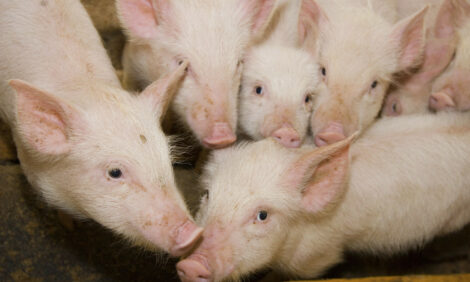



Why Ractopamine Increases Aggressive Behaviour
US - The beta-agonist, ractopamine, increased aggressive behaviour, especially in gilts in two studies. According to ARS researchers, it appears the product affects areas if the brain vital for aggression regulation.R. Poletto from the USDA-ARS Livestock Behavior Research Unit in West Lafayette, Indiana and co-authors have published a paper investigating aggressiveness and brain amine concentration in dominant and subordinate finishing pigs fed the beta-adrenoreceptor agonist, ractopamine, in Journal of Animal Science.
They explain that, under farm conditions, aggression related to the formation of social hierarchy and competition for resources can be a major problem due to associated injuries, social stress and carcass losses. Any factor that may impact the regulation and amount of aggression within a farmed system, for instance, the feeding of the beta-adrenoreceptor agonist ractopamine (RAC), is therefore worthy of investigation.
The objectives of their study were to assess the effects of the widely used swine feed additive RAC, considering also the effects of sex and social rank on aggressiveness and concentrations of brain amines – neurotransmitters essential for controlling aggression – in finishing pigs. Thirty-two barrows and 32 gilts (4 pigs per pen by sex) were fed either the control or RAC (5 mg/kg for two weeks followed by 10 mg/kg for a further two weeks) added diet.
The top dominant and bottom subordinate pigs (16 pigs per sex) in each pen were determined post-mixing by a 36-hour period of continuous behavioural observation. These pigs were then subjected to resident-intruder tests (maximum 300 seconds) during the feeding trial to measure aggressiveness. At the end of week 4, their amygdala, frontal cortex, hypothalamus and raphe nuclei were dissected and analysed for concentrations of dopamine (DA), serotonin (5-HT), their metabolites DOPAC/HVA and 5-HIAA respectively, norepinephrine (NE) and epinephrine (EPI) using HPLC.
Ractopamine-fed gilts performed more attacks during the first 30 seconds of testing than all other subgroups (P<0.05). By the end of the resident-intruder test (300 seconds), the dominant control gilts and barrows, and both dominant and subordinate RAC gilts performed the greatest percentage of attacks (P<0.05).
Gilts had lower NE and DOPAC concentrations in the amygdala and frontal cortex and when fed RAC, gilts also had the lowest 5-HIAA concentration and greatest DA turnover rate in the amygdala (P<0.05). The 5-HT concentration was lower in the frontal cortex of gilts compared to barrows and in the raphe nuclei (single site for brain 5-HT synthesis) of dominant gilts (P<0.05).
Ractopamine may be affecting aggressive behaviour through indirect action on central regulatory mechanisms such as the DA system. The aggressive pattern observed in the tested pigs, especially in gilts, is likely linked to brain monoamine profiling of a deficient serotonergic system in the raphe nuclei, amygdala, and frontal cortex, and enhanced DA metabolism in the amygdala – brain areas vital for aggression regulation.
Reference
Poletto R., H.W. Cheng, R.L. Meisel, J.P. Garner, B.T. Richert and J.N. Marchant-Forde. 2010. Aggressiveness and brain amine concentration in dominant and subordinate finishing pigs fed the {beta}-adrenoreceptor agonist ractopamine. Journal of Animal Science, May 21. [Epub ahead of print]








